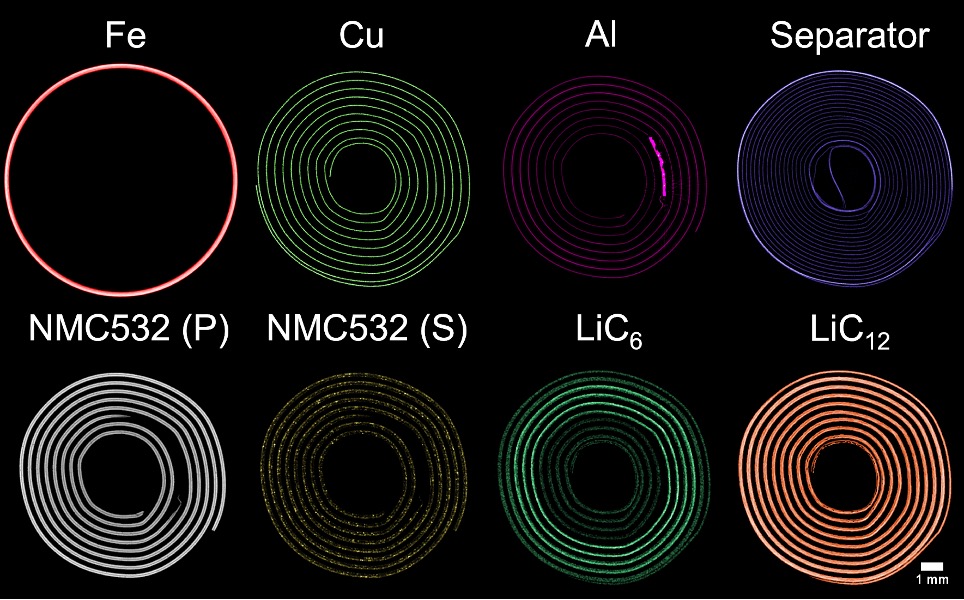Case Study: Resolving the chemistry inside commercial cylindrical Li-ion batteries with X-ray diffraction computed tomography (XRD-CT)
Companies involved:
Finden Ltd, University College London, DESY, Alan A. Coelho, STFC’s SciML
Challenge:
Li-ion batteries (LiBs) have dominated the energy storage market finding applications in portable electronic devices, electric vehicles and grid storage. Over the past decade, X-ray imaging techniques have attracted a lot of interest as diagnostic tools for LiBs however conventional methods most often fail to resolve the chemistry inside commercial devices.
Sample:
Commerical NMC532 Li-ion battery cells
Solution:
Synchrotron high-energy X-ray diffraction computed tomography (XRD-CT) was employed to investigate, for the first time, commercial cylindrical Li-ion batteries electrochemically cycled over the two cycling rates of C/2 and C/20. This technique yielded maps of the crystalline components and chemical species as a cross-section of the cell with high spatiotemporal resolution (550 x 550 images with 20 x 20 x 3 µm3 voxel size in ca. 1 h). The recently developed Direct Least-Squares Reconstruction algorithm was used to overcome the well-known parallax problem and led to accurate lattice parameter maps for the device cathode.
Benefits:
Chemical heterogeneities were revealed at both electrodes and were attributed to uneven Li and current distributions in the cells. It was shown that the XRD-CT technique has the potential to become an invaluable diagnostic tool for real-world commercial batteries and for their characterization under operating conditions, leading to unique insights into “real” battery degradation mechanisms as they occur.
Further reading:
Cycling Rate-Induced Spatially-Resolved Heterogeneities in Commercial Cylindrical Li-Ion Batteries. Vamvakeros A., Matras D., Ashton T. E., Coelho A.A., Dong H., Bauer D., Odarchenko Y., Price S.W.T., Butler K.T., Gutowski O., Dippel A.C., von Zimmerman M., Darr J.A., Jacques S.D.M., Beale A.M., Small Methods, 2100512, 2021, DOI: https://doi.org/10.1002/smtd.202100512
Read more about our team and further publications.

